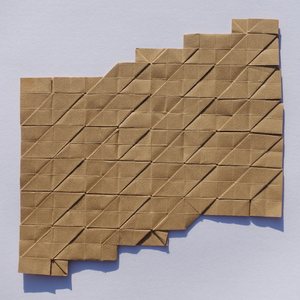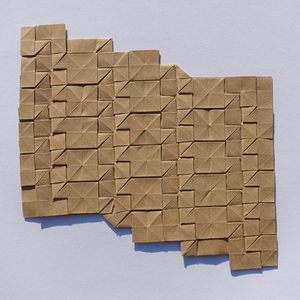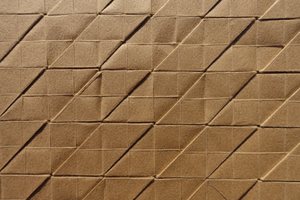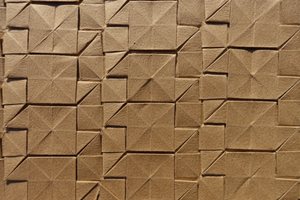Parallelograms




This is an older design I finally got some time to make a decent fold of (have a look at the prototype from 2017). I’m pretty sure I’ve seen something very similar or identical to a single molecule (one parallelogram) made by someone else independently, but I can’t recall where. However, I haven’t seen a tessellation of those so far. The pattern of parallelograms with every other one in a row laying either “lower” or “higher” is quite interesting, and it can also be seen as a weave pattern of two sets of strands intersecting at a 45° angle. Each molecule is 8×6 grid units, the whole model uses a 32×32 grid (4×5 molecules and one unit of margin at the top and at the bottom).
With this design, I overestimated my capabilities. I designed and creased a clean pre-crease pattern which would allow the parallelograms to be completely free of any visible crease lines. Then, I found out I was not able to collapse it and had to go back and make a less attractive fold with the complete grid visible. This is the first time it has happened to me. The reason is, I didn’t take into account that the molecules are shifted relative to each other in both horizontal and vertical axes, in contrast to most models where the shift occurs in only one axis. Thus, it is very difficult to collapse the model without having to temporarily make a pleat through other, already collapsed molecules. It might be possible with a larger sheet, and maybe I will try to make a clean fold some time later if time allows. You can recognize the issue by looking at the complete folded model, whose shape is not a rectangle, but a “staggered rectangle” similar to a parallelogram. Update: I managed to make a clean fold from the original precreased sheet in 2022.
There are two different ways to arrange the layers, resulting in slightly different possible looks of the back of this model.
Comments